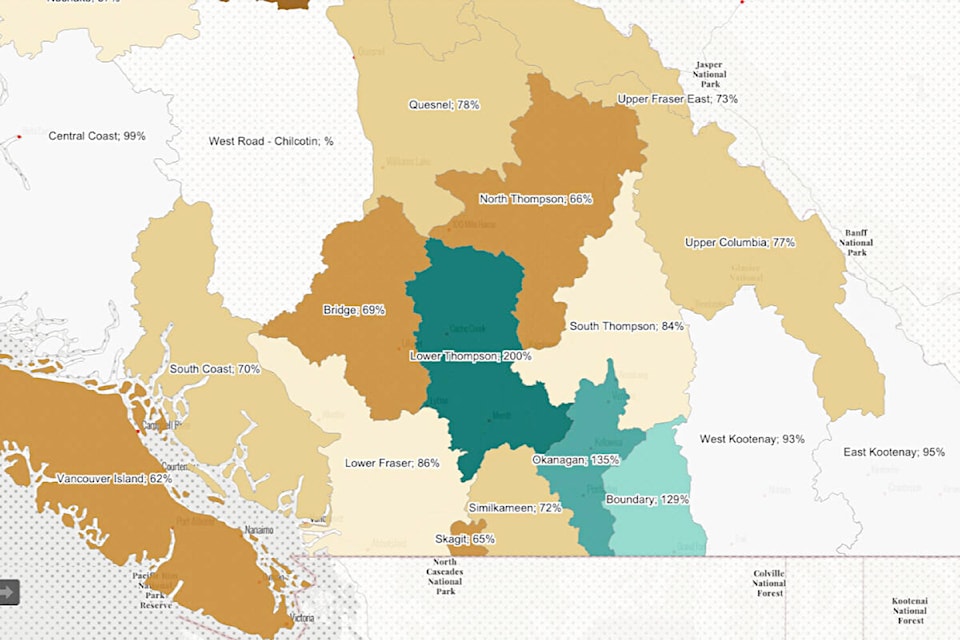A below normal snow pack for most of the province is an early indicator that some regions in B.C. might have drought concerns this spring and summer.
The “Snow Survey and Water Supply Bulletin” for Jan. 1, 2023 that was recently issued by the province’s River Forecast Centre shows that across the province, the average of all snow measurements is at 82 per cent of normal (18 per cent below normal). Only three areas had above average snow measurements, with Lower Thompson (which includes Lytton, Ashcroft, Cache Creek, Clinton, and Merritt) leading the way at 200 per cent of average.
The other two area with above average snow accumulation as of Jan. 1 were Okanagan (135 per cent of normal) and Boundary (129 per cent). At the other extreme, the Bridge area (which includes Lillooet) is at 69 per cent of normal, while the North Thompson area is at 66 per cent.
The report notes that significant drought conditions in summer and fall 2022 were accompanied by a September and October that were much warmer than usual. On Thanksgiving Day 2022 (Oct. 10), Ashcroft recorded a high of 28.2 C., almost four degrees higher than the old record for that day of 24.4 C. set in 1945.
These conditions were followed by extended cold and dry weather in November and December, which limited snow accumulation in the mountains. December was cold throughout the province, with temperatures -8 C. to -1 C. below normal.
On average, by early January nearly half the annual B.C. snow pack has typically accumulated, and the report says that with three or more months left for snow accumulation, the seasonal snow pack levels can change significantly based on weather patterns.
The Climate Prediction Center indicates that there is a good chance of continued La Niña conditions through the remainder of winter (January through March). Historically, when winter La Niña conditions exist in B.C., the April 1 snow pack is often above normal, particularly for the South Coast and Southern Interior.
However, La Niña conditions that persist into the spring can lead to late-season snow accumulation and delayed snowmelt, which increases the risk of freshet flooding.
The River Forecast Centre will publish its next Snow Survey and Water Supply Bulletin on Feb. 8.
editorial@accjournal.ca
Like us on Facebook and follow us on Twitter
